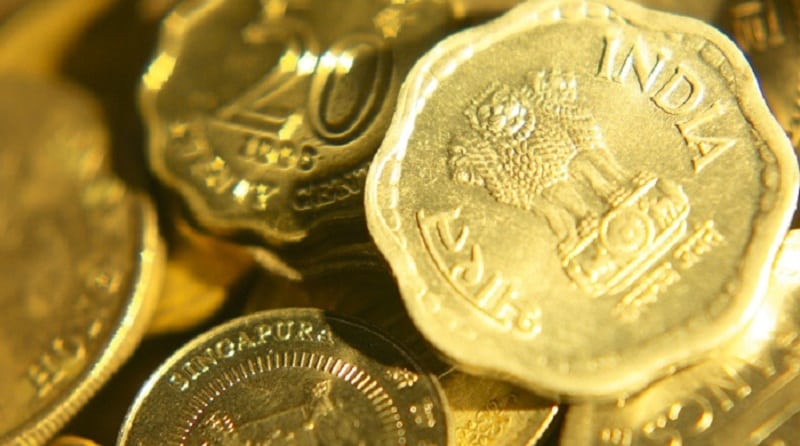On 8 November 2016, the Indian prime minister undertook the surprise initiative of removing 500 and 1,000 rupee notes from circulation almost overnight.
It was widely expected that once this ground-breaking move had bedded in, most of the swiftly-banked money would once again find itself under the mattresses of Indians across the country, but that has not been the case.
As Simon Finch, manager of the Ashburton India Equity Opportunities Fund, notes, there has been a change in mentality in the last year as banks have begun to play a bigger role in everyday society.
This has been driven not just by demonetisation, but also by a cultural change of digital development that is moving India from an “informal” to a “formal” economy. As a result, the Indian people want their cash to work harder for them.
“A significant cultural shift has occurred, with around 40% of those deposits now retained within the banking system,” Finch says. “The change is expected to be sustainable and is one driving the Indian equity markets upwards, providing liquidity to the $3trn market.”
Greater access to financial services
Indeed, more money has subsequently entered the domestic equity market, largely from domestic investors, into mutual funds, stocks and to some extent, bonds. This shift has been fuelled further by low interest rates and problems in the property market.
Finch notes that currently about 3.5% of India’s household assets are invested in the domestic equity market, which is up from the 2.2% in 2013 but not yet back to the peak of about 5% experienced in 2007/8.
“You have seen a huge amount of buying and a lot is buying benchmark liquid names,” he says. “People will be looking to make more money in monthly savings and will want to see that grow.”
Finch says this cultural change has been facilitated by several policy steps. The first is the introduction of the Aadhaar unique identification scheme, with more than one billion Indians now registered on the nationwide database. In addition, Modi’s ‘no-frills’ bank account scheme has seen nearly 300 million accounts opened in the past three years.
“Throw in the demonetisation move and it is clear to see the Indian population has greater access to financial services than ever before,” he adds.
That said, Finch notes in excess of 90% of transactions are still in cash, but the transition underway to a more digital, formal economy will result in more initiatives such as online e-wallet providers and a greater appetite for doing business electronically.
Long-term game
Jorry Rask Nøddekær, manager of the Nordea 1 – Emerging Stars Equity Fund, says one-year is too short term to judge the full impact of demonetisation and it is important to view it through a much longer-term lens.
“This move allows India to operate in a more structured way and bring the ordinary person into the formal economy. We believe this initiative – as well as additional reform efforts, such as the recently-introduced GST – will reap major rewards for India over a five to 10-year time horizon.”
Other measures
Indeed, since demonetisation India has undergone other, perhaps more significant, changes to its taxation and banking system.
Arguably a bigger boon for the country in recent months has been the government’s decision to recapitalise the public sector banks. In October, the government announced it would pump $32bn, 1.4% of GDP and 50% of market capitalisation, into the ailing public bank system which it believes will be sufficient to cover losses from remaining problem loans stifling the economy.
Jan Dehn, head of research at Ashmore Group, describes the measures as “extremely good news” for India.
“Firstly, bank recapitalisation was the single largest urgent reform still outstanding in India,” he says. “Stronger banks will enable corporate and household credit conditions to improve, which should lead to stronger domestic demand-led growth in the coming years.
“Secondly, once the banking sector is healthy there is no real reason for India not to grant foreign investors greater access to its bond domestic bond market. This will in turn lead to lower interest rates over the cycle, in our view.”
Prior to this, in July India announced its biggest ever tax reform programme: the goods and services tax (GST). The measures have experienced some problems getting off the ground, but the one national tax system it ushered in is set to simplify the complex state tax regime it replaced.
Dehn says the decision to recapitalise the state banks was well timed against a backdrop of slowing growth due to GST.
He adds: “The government is working to deal with the teething problems associated with GST and the system should start to function as intended within the next couple of quarters.”
Finch meanwhile, expects that once the measures are bedded in, GST will add about 1% to India’s GDP.
Restore confidence
Overall Mihir Kapadia, chief executive and founder of Sun Global Investments, says the whole demonetisation episode has strengthened the country’s financial infrastructure by creating a “robust banking system”.
He believes this, combined with the bank re-capitalisation, will eventually help to restore confidence in the country’s financial sector and eventually attract further international investment into India.
“The demonetisation exercise has been highly politicised in the country, as the immediate impact was chaos and confusion,” he says. “In the short term, India has had an estimated 2% shaved off its GDP for the first quarter, but in the long term it could turn out to be a positive factor, as it enabled the injection of capital into the banking system.
“Demonetisation has helped the stockmarket in the short to medium-term but it will help India’s investment prospects in the long run.”







